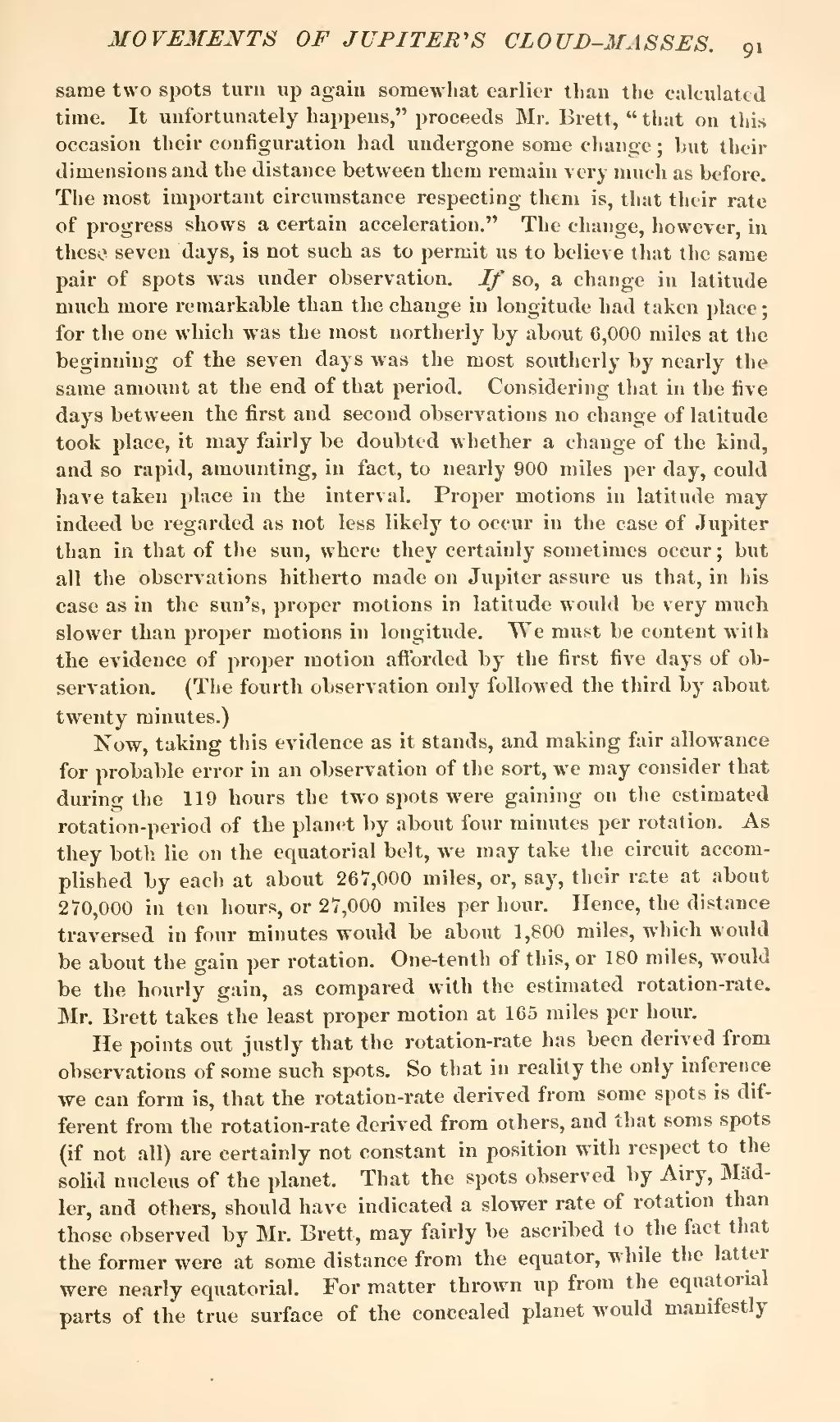same two spots turn up again somewhat earlier than the calculated time. It unfortunately happens," proceeds Mr, Brett, "that on this occasion their configuration had undergone some change; but their dimensions and the distance between them remain very much as before. The most important circumstance respecting them is, that their rate of progress shows a certain acceleration." The change, however, in these seven days, is not such as to permit us to believe that the same pair of spots was under observation. If so, a change in latitude much more remarkable than the change in longitude had taken place; for the one which was the most northerly by about 6,000 miles at the beginning of the seven days was the most southerly by nearly the same amount at the end of that period. Considering that in the five days between the first and second observations no change of latitude took place, it may fairly be doubted whether a change of the kind, and so rapid, amounting, in fact, to nearly 900 miles per day, could have taken place in the interval. Proper motions in latitude may indeed be regarded as not less likely to occur in the case of Jupiter than in that of the sun, where they certainly sometimes occur; but all the observations hitherto made on Jupiter assure us that, in his case as in the sun's, proper motions in latitude would be very much slower than proper motions in longitude. We must be content with the evidence of proper motion afforded by the first five days of observation. (The fourth observation only followed the third by about twenty minutes.)
Now, taking this evidence as it stands, and making fair allowance for probable error in an observation of the sort, we may consider that during the 119 hours the two spots were gaining on the estimated rotation-period of the planet by about four minutes per rotation. As they both lie on the equatorial belt, we may take the circuit accomplished by each at about 267,000 miles, or, say, their rate at about 270,000 in ten hours, or 27,000 miles per hour. Hence, the distance traversed in four minutes would be about 1,800 miles, which would be about the gain per rotation. One-tenth of this, or 180 miles, would be the hourly gain, as compared with the estimated rotation-rate. Mr. Brett takes the least proper motion at 165 miles per hour.
He points out justly that the rotation-rate has been derived from observations of some such spots. So that in reality the only inference we can form is, that the rotation-rate derived from some spots is different from the rotation-rate derived from others, and that some spots (if not all) are certainly not constant in position with respect to the solid nucleus of the planet. That the spots observed by Airy, Mädler, and others, should have indicated a slower rate of rotation than those observed by Mr. Brett, may fairly be ascribed to the fact that the former were at some distance from the equator, while the latter were nearly equatorial. For matter thrown up from the equatorial parts of the true surface of the concealed planet would manifestly
